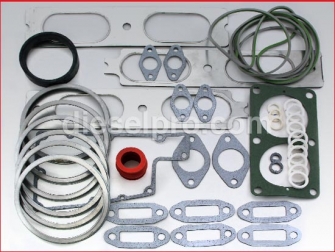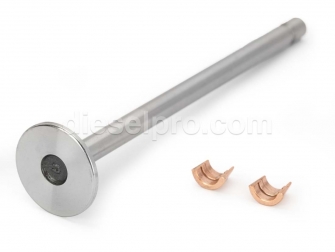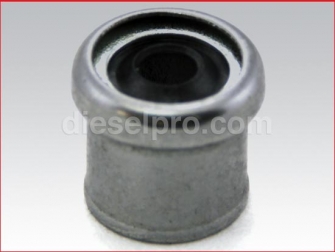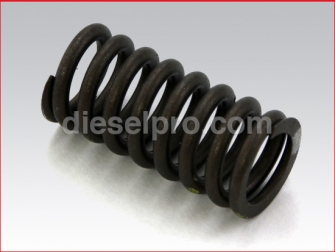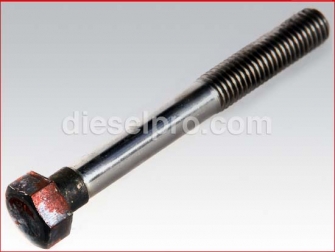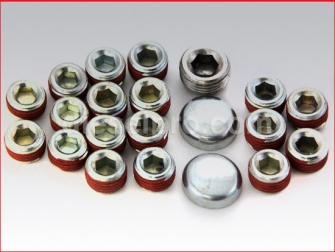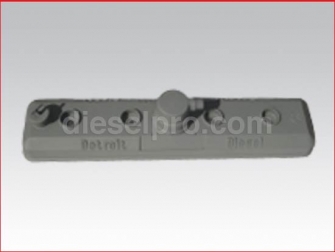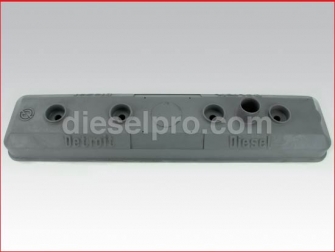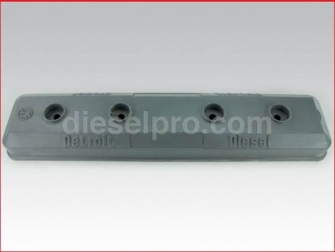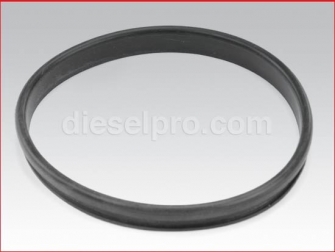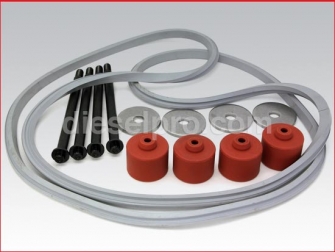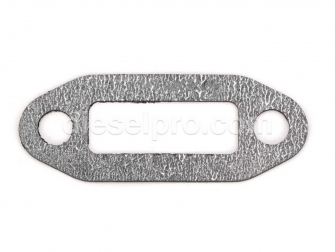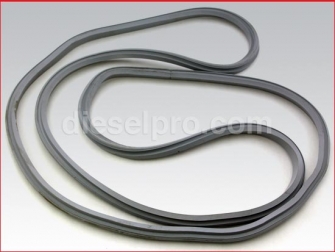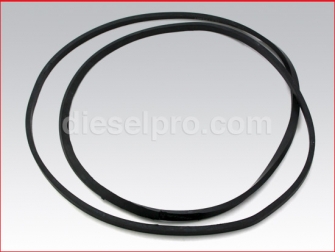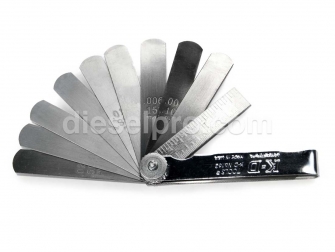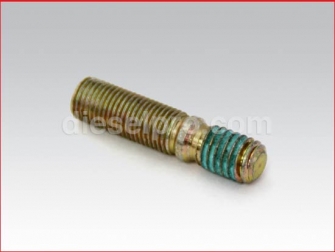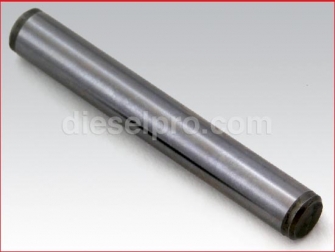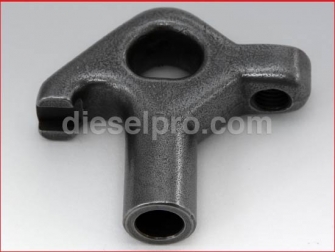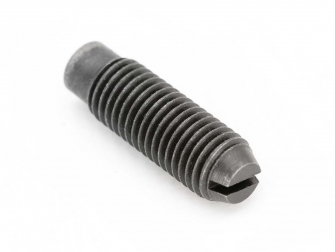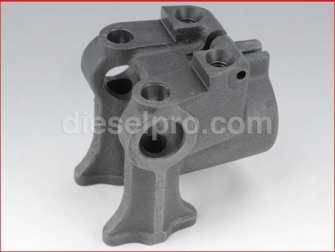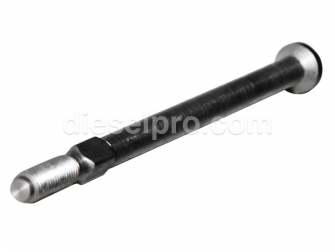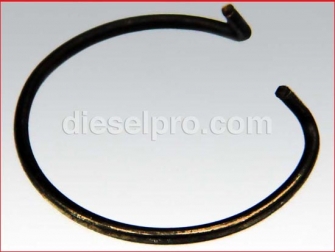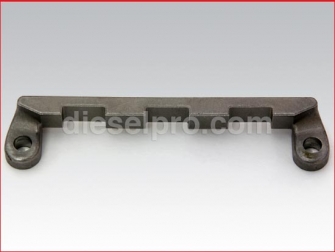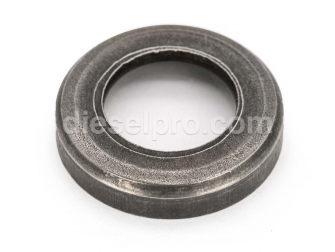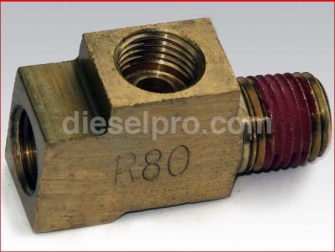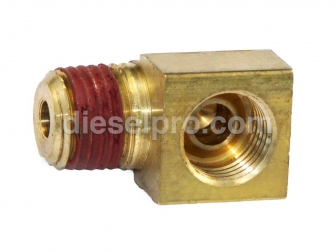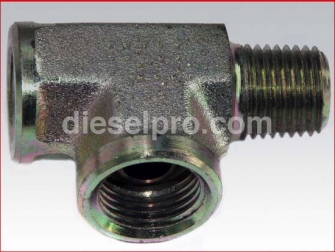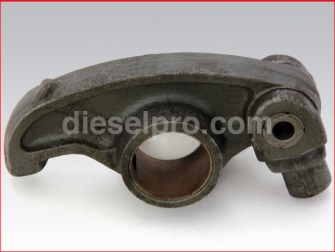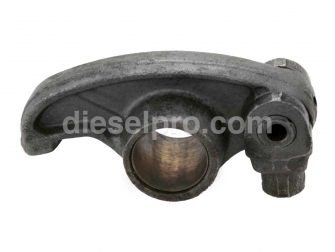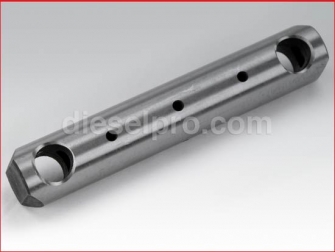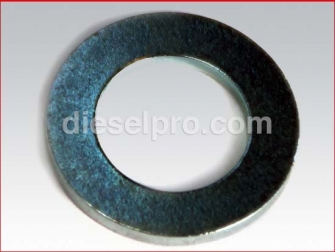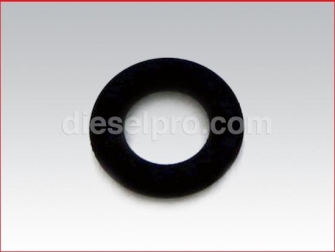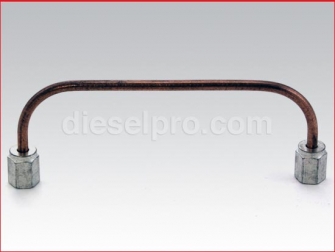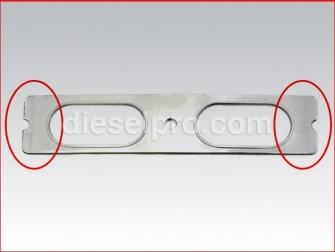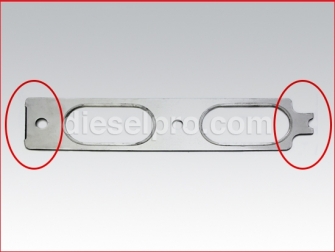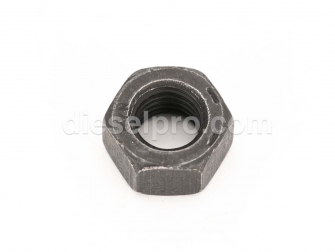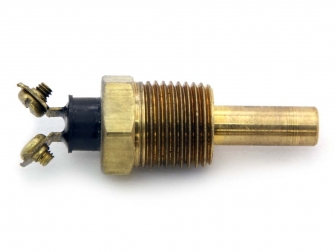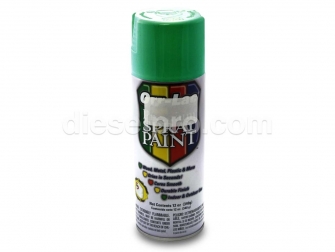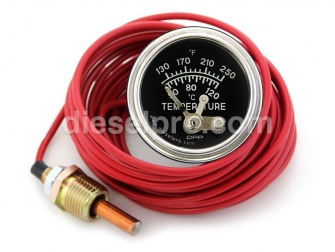Parts for Detroit Diesel 12V71 Turbo - Cylinder head Section
 Loading...
Loading... Parts for Detroit Diesel 12V71 Turbo — Cylinder Head Section
Welcome to the definitive cylinder head catalog for the Detroit Diesel 12V71 Turbo. This page is purpose-built for operators, rebuilders, and fleets who need a clean, organized path to the right 12V71 turbo cylinder head and all the companion hardware that makes a top-end job go smoothly. While several parts listed below also fit other 71-series variants (for example, 6-71), the content, guidance, and selection help on this page are focused on the 12V71 Turbo.
Quick platform note: The 12V71 uses two cylinder heads—one per bank of the V block. Plan quantities accordingly for heads, head gasket kits, rocker cover gaskets, head bolts, injector tubes, and exhaust manifold gaskets. When a listing indicates “quantity per engine,” remember to multiply by two banks where applicable.
Cylinder Heads for 12V71 Turbo
Rebuilt Bare Cylinder Head (Core Deposit Applies)
Best for: Experienced shops planning to transfer and set up all valvetrain components in-house.
-
What you get: A rebuilt cylinder head body (bare). No valves, springs, seats, guides, or hardware installed.
-
Why choose bare: Maximum control over valve type (U vs. J), springs, and guide specs. Ideal if you already have new components on the shelf or you’re standardizing a fleet build.
-
Core policy: Sold with a refundable core deposit. Return an acceptable core to reclaim your deposit.
-
Fitment focus: 12V71 Turbo (also used on certain 6-71 applications), but the build objective here is for the 12V71 turbo bank.
-
Shop checklist:
-
Inspect deck for flatness before install.
-
Pressure-test water jackets.
-
Verify injector tube seats and fire deck condition.
-
Confirm valve seat cuts match your target valve angle/spec before final assembly.
Quantity reminder: A 12V71 requires two heads. Order two if you are refreshing the full top end.
Best for: Operators wanting a fresh casting without preinstalled valvetrain.
-
What you get: A brand-new cylinder head casting with clean, undisturbed valve seat registers and guide bores, ready to be built to your specification.
-
Why choose new bare: Eliminates unknowns from core history. Perfect when you’re targeting long service life in high-load marine or industrial duty and want fresh material to spec your own valvetrain.
-
Build flexibility: Install either U-type (standard/“natural or turbo”) valves or J-type high-performance valves depending on your boost, EGT, and horsepower goals.
New Cylinder Head — With Valves & Springs (U Valves)
Best for: Quick turnarounds on standard turbo builds.
-
What you get: A new head preloaded with U-type valves and matched springs suitable for natural and turbo configurations in typical horsepower ranges.
-
Why choose this build: Minimizes bench time, reduces the chance of assembly stack-up errors, and gets you to torque and run-in faster.
-
Ideal users: Commercial operators who need predictable, OEM-style performance without the tuning envelope of high-output builds.
New Cylinder Head — With Valves (J6) & Springs (High-Performance Turbo)
Best for: High-performance turbo 12V71 builds.
-
What you get: A new cylinder head outfitted with J-series (J6) valves and springs engineered for higher cylinder pressures and sustained EGT common to uprated turbo calibrations.
-
Why choose J components: The J-valve family supports higher performance envelopes. If your turbo setup, prop load, or duty cycle pushes the top end, J6 hardware is the right foundation.
New Complete Cylinder Head (All Components Installed, J6 Valves)
Best for: Operators wanting the fastest possible install with everything dialed in.
-
What you get: A complete, ready-to-install head with all components pre-assembled and J6 high-performance valves installed.
-
Benefits:
-
Minimal downtime—move from unboxing to torquing.
-
Factory-controlled assembly reduces setup variability.
-
Ideal for paired replacement—buy two complete heads and refresh the full engine top end in one service window.
Head Gasket Kits & Sealing Components
12V71 Head Gasket Kit (Two Required Per Engine)
Best for: Any top-end job on a 12V71.
-
What you get: A head gasket kit for one bank. A 12V71 requires two kits—one per cylinder head.
-
Why two kits: The 12V71 V-configuration uses a separate head for each bank; each bank needs its own full complement of gaskets and seals.
-
Pro tip: Buy both kits at the same time. Mixing batches or suppliers mid-job can introduce sealing inconsistencies.
Rocker (Valve) Cover Gaskets — New Style (Gray) & Old Style (Black)
Fitment tips:
-
Best practice: Match gasket style to cover material and verify the cover’s rail is straight. Replace warped covers to avoid persistent weeping.
Water Manifold Gasket & Outlet Plate
During head service, inspect the water rail/manifold interfaces for pitting and corrosion. Replacing the water manifold gasket and the cylinder head water outlet plate saves repeat labor and prevents coolant seepage that can mimic head gasket issues.
Valves, Guides, Seats & Springs
Exhaust Valves — U vs. J (High-Performance Turbo)
-
U Valves: Proven, standard choice for natural and typical turbo duty. Balanced durability and cost; excellent for stock-to-moderate tunes.
-
J Valves (High Performance): Built for elevated EGT and boost, common in hard-working marine propulsion and heavy industrial duty cycles. If your horsepower target climbs, choose J.
Selection shortcut: If you’re installing the J6 high-performance cylinder head assemblies, pair them with J-type exhaust valves when refreshing or supplementing spares.
-
Role: Stabilize valve stem motion, manage oil control, and maintain seat concentricity.
-
Replacement cue: Excessive stem clearance, blueing on stems, or uneven seat contact.
-
Install tip: After pressing guides, ream/hone to spec, then check stem-to-guide clearance with a bore gauge and mic.
-
Role: Provide hard, precise sealing surfaces that transfer heat out of the valve.
-
When to replace: Recession beyond spec, guttering, or micro-cracking.
-
Machine tip: After installation, perform a multi-angle seat cut as specified for your valve choice (U or J) and confirm contact width and placement with bluing.
-
Why they matter: Correct seat pressure and open pressure keep the valve train stable at boost and RPM.
-
Replace if: Free length is out of spec, seat pressure is low, or signs of heat distress/coil bind appear.
-
Pro move: Always test spring pressure rather than relying solely on visual inspection.
Valve Seals (Use 4 per Cylinder)
-
Function: Control oil past the guide to avoid blue smoke and deposits on valve faces and seats.
-
Tip: Replace all seals whenever the head is off. It’s inexpensive insurance for a clean burn.
Valve Train Hardware: Caps, Washers, Bridges & Guides
-
Valve Caps & Spring Washers: Refresh these to maintain consistent installed height and spring rotation behavior.
-
Exhaust Valve Bridge & Bridge Guide: Critical for even load transfer across paired valves. Replace bridges that show wear flats or uneven contact patterns.
Rocker Gear, Cam Follower & Pushrod Hardware
-
What to know: Left- and right-hand rockers are not interchangeable. Inspect pads/rollers for pitting or trough wear.
-
Tip: Replace in pairs per cylinder to maintain uniform motion and geometry.
-
Role: Supports rocker arms and provides the oiling path. Shaft wear leads to erratic valve action.
-
Service tip: Check for ovaling and varnish. Replace shafts showing pronounced wear; combine with new rockers for best results.
Cam Follower (Assembly), Guide & Related Hardware
-
Cam follower assemblies transfer lobe motion to pushrods. Flat spotting, scuffing, or roller slop is grounds for replacement.
-
Follower guide holds alignment—replace if cracked or worn.
-
Pushrod Spring, Seats & Retainer: Cheap parts that solve many top-end ticks. If you’re this deep, refresh them.
-
Check: Straightness (roll test), tip wear, and oil passage cleanliness.
-
Replace if: Any bend, mushroomed tips, or internal blockage is found.
Cylinder Head Fasteners & External Covers
-
Why refresh: Reusing fatigued bolts can lead to uneven clamping and gasket failure.
-
Pro tip: Clean threads in the block with the proper chaser, not a cutting tap. Follow the recommended torque sequence and stages. If torque-to-yield is specified, do not reuse.
Rocker (Valve) Covers — With/Without Oil Filler & Breather
-
Used options: Inspected, sandblasted, and primed covers offer a budget-friendly way to replace dented or warped tins.
-
Breather seal: Replace the valve cover breather seal any time the cover is off to keep oil mist inside where it belongs.
Fuel & Injector Tube Interfaces at the Head
Injector Tubes & Flaring Tooling
-
Injector Tube: Seals fuel at the head and protects the casting from combustion heat at the injector bore.
-
Why the flaring die matters: The dedicated flaring die ensures proper seat geometry and lasting, leak-free injector tube joints. If you’re installing new tubes, use the correct tool.
Fuel Pipe Connectors, Washers & Jumper Lines (Old & New Style)
-
Short and Long Jumpers: 71-series uses both lengths. Replace o-rings (new style) or washers (old style) two per connection and torque evenly to avoid leaks.
-
Elbows & T-Connectors (with/without restriction): Select fittings that match your fuel return and supply configuration. Restrictions are calibrated—don’t improvise.
Exhaust Manifold to Head Gaskets
-
71/92 Series Gaskets: Different gasket footprints exist for specific manifold patterns (6-71, 8V71, 12V71, etc.). Use the gasket number that matches your manifold configuration.
-
Tech tip: After cleaning manifold and head faces, check with a straightedge. If either surface is warped beyond spec, correct it or replace before final assembly.
Cooling Interfaces on the Head
Water Manifold Studs, Gaskets & Outlet Plate
-
Why refresh: Old studs and flanges corrode, making future service a nightmare and creating potential weeps.
-
Replace together: Studs, gasket, and outlet plate as a set for best sealing and serviceability.
Sensors, Caps & Service Aids
Temperature Switch (Common Service Item)
-
Use case: Reliable over-temp warning or fan control logic. Confirm thread (e.g., 1/2" NPT) and closing temperature to match your system design.
-
Details: 2" cap commonly used on rocker/valve covers with integrated filler port. Replace hardened seals to prevent mist.
Feeler Gauge Set (.002"–.025")
-
Why it’s in the head section: You’ll need precise feeler blades to set valve lash and injector height during head installation and run-in.
Choosing the Right Head for Your 12V71 Turbo
1) Decide on Bare vs. Assembled
-
Bare Head: You supply and fit valves, guides, seats, springs, and hardware. Best for shops with machine capability and a preferred valvetrain recipe.
-
Assembled Head (U Valves): Faster install, great for stock or mildly boosted engines.
-
Assembled Head (J6 Valves): Targeted at high-performance turbo builds. If you’re chasing higher HP and sustained load, pick J6.
2) Match Valve Type to Duty Cycle
-
U Valves: Balanced, reliable for standard turbo duty.
-
J Valves: Enhanced durability under heat/boost—recommended for uprated builds and heavy marine use.
3) Plan Quantities for a V-Engine
-
Two heads per engine.
-
Two head gasket kits per engine.
-
Duplicate gaskets, seals, and fasteners as appropriate per bank.
4) Don’t Skip the Small Stuff
-
Breather seals, rocker cover gaskets, injector tube o-rings/washers, fuel jumper seals, and manifold studs are low-cost parts that prevent comebacks.
Installation Planning & Best Practices (High-Level)
Always follow the official service manual for your exact engine configuration. The notes below are general best practices to help you plan your job.
-
Block & Deck Prep
-
Clean the deck thoroughly; no old gasket material, no scoring.
-
Verify deck flatness with a precision straightedge and feeler gauges.
Head Prep
-
Pressure-test water jackets.
-
Inspect fire deck and injector tube bores.
-
If assembling bare heads, set guide clearances, cut seats, and verify valve contact.
Fasteners & Threads
-
Clean all block threads.
-
Lightly oil or use specified lubricant where required.
-
Follow the correct sequence and stage torques per the manual.
Manifolds & Water Rail
-
Dry-fit manifolds to confirm alignment.
-
Replace studs and gaskets if there’s any doubt.
Valve & Injector Settings
-
Set valve lash per spec with a calibrated feeler gauge.
-
Set injector height precisely; small deviations affect performance and smoke.
First Fire & Run-In
-
Check for fuel and coolant leaks around the head interfaces.
-
Monitor temps and oil pressure closely.
-
Re-check lash and retorque procedures if required by your maintenance standard.
Troubleshooting Top-End Issues (12V71 Turbo)
-
Persistent Coolant Weep at Head/Manifold Junction
Likely a water manifold gasket or outlet plate issue, not the head gasket. Refresh studs, plate, and gasket and check flange flatness. -
Exhaust Soot at Manifold to Head
Usually a warped manifold or crushed gasket. Replace the gaskets and inspect manifold straightness. -
Oil Mist from Valve Cover
Aging breather seal or warped cover rail. Replace the breather seal and consider a straight, inspected cover. -
Fuel Seep at Injector Tubes or Jumpers
Renew injector tubes using the proper flaring die, and always replace o-rings/washers on jumper lines. Torque evenly. -
Ticking/Clatter After Head Install
Re-check lash, rocker pad condition, and pushrod straightness. Inspect cam follower rollers and guides.
Popular 12V71 Turbo Cylinder-Head Related Items (At a Glance)
-
Cylinder Heads
-
Rebuilt bare (core deposit applies)
-
New bare
-
New with U valves & springs
-
New with J6 valves & springs (high-performance turbo)
-
New complete with all components and J6 valves
-
Gaskets & Seals
-
Head gasket kit (two required per engine)
-
Rocker cover gaskets — new style (gray) and old style (black)
-
Water manifold gasket & outlet plate
-
Valve stem seals (4 per cylinder)
-
Valve Train Components
-
Exhaust valves (U and J options)
-
Valve guides & seats
-
Valve springs, caps, spring washers
-
Exhaust valve bridges & bridge guides
-
Rocker arms (LH/RH) & rocker arm shaft
-
Cam follower assemblies & guides
-
Pushrods, springs, seats, and retainers
-
Fuel & Injector Interface
-
Injector tubes + flaring die tool
-
Fuel jumpers (short/long; old/new style)
-
Connectors, elbows, and T-fittings (with/without restriction)
-
Sealing washers and o-rings (2 per connection)
-
Covers, Caps & Tools
-
Rocker/valve covers (with/without oil filler)
-
Oil filler cap (2")
-
Feeler gauge sets for lash/injector height
-
Temperature switch (common 205°F close, verify thread)
Buying Guide: Standard vs. High-Performance 12V71 Turbo Top-Ends
Choose Standard (U Valve) Assemblies if you:
-
Run stock to moderate turbo boost and fueling.
-
Prioritize OE-style longevity and predictable maintenance intervals.
-
Need minimal downtime and quick ROI.
Choose High-Performance (J6 Valve) Assemblies if you:
-
Operate at higher HP or sustained heavy prop/industrial loads.
-
Need improved thermal durability at elevated EGT.
-
Want a future-proof head build that tolerates tuning headroom.
Bare vs. Complete:
-
Bare: You’re comfortable with machine work and want to blueprint every spec.
-
Complete: You want the fastest path back to service with factory-assembled uniformity.
Pro Tips to Reduce Downtime
-
Order in Pairs: Two heads, two head gasket kits, and double quantities of critical seals/gaskets.
-
Refresh Hardware: Head bolts, manifold studs, injector tube seals, jumper line o-rings/washers.
-
Pre-Stage Tools: Feeler gauges, injector height tooling, and the specific injector tube flaring die.
-
Inspect Covers: Swap warped rocker covers now; it’s inexpensive compared to future oil leaks.
-
Document Settings: Record lash and injector height settings per cylinder for future diagnostics.
What Sets Diesel Pro Power Apart for 12V71 Cylinder Heads
-
Purpose-Built Catalog: Every component on this page is curated for the 12V71 Turbo top-end, minimizing cross-platform confusion.
-
Depth of Inventory: From complete J6 high-performance heads to the smallest bridge guide or spring washer—order everything you need in one pass.
-
Quality You Can Trust: Components are selected to meet or exceed demanding Detroit Diesel standards.
-
Global Reach, Real Support: Backed by 40,000+ satisfied customers worldwide, with practical, hands-on guidance to get you from cart to commissioning.
-
Fast Fulfillment: Keep downtime low with rapid processing and dependable shipping options.
Frequently Asked Questions (12V71 Turbo Cylinder Heads)
Q1: Do I need two head gasket kits for a full 12V71 top-end job?
A: Yes. The 12V71 uses two cylinder heads (one per bank), so you need two head gasket kits.
Q2: Should I pick U valves or J valves?
A: For standard turbo use, U valves are an excellent, proven choice. For high-output or sustained heavy-load duty, choose J (e.g., J6) valves to tolerate higher temperatures and pressures.
Q3: Is a new bare head better than a rebuilt bare head?
A: Both are viable. A new bare head starts with fresh casting metallurgy, ideal for long-life fleets and heavy duty. A rebuilt bare head is a cost-effective option for shops that can verify deck integrity and seat/guide geometry before assembly.
Q4: What else should I replace while I’m in the head?
A: Rocker cover gaskets, breather seal, water manifold gasket/outlet plate, injector tubes (plus seals), fuel jumper o-rings/washers, and exhaust manifold gaskets. Consider head bolts and manifold studs as well.
Q5: Can I reuse head bolts?
A: Follow the official guidance for your specific fasteners. If torque-to-yield is specified or if bolts show signs of stretch/corrosion, do not reuse.
Q6: Why are my new gaskets still weeping coolant?
A: Often the culprit is the water manifold gasket or outlet plate rather than the head gasket. Check flange flatness and replace studs and the outlet plate if pitted.
Q7: Do I need the injector tube flaring tool?
A: Yes—if you replace injector tubes. The dedicated flaring die ensures the proper sealing geometry and prevents fuel leaks and combustion gas intrusion.
Q8: Are the rocker arms side-specific?
A: Yes. The 71-series uses left and right rocker arms. Match them correctly to avoid geometry and lash issues.
How to Build Your 12V71 Cylinder Head Cart (Step-By-Step)
-
Choose the Head Type (x2):
-
Rebuilt bare, New bare, New with U valves, New with J6 valves, or New Complete (J6).
-
Add two to your cart for a full engine refresh.
Add Head Gasket Kits (x2):
-
Two kits per engine.
Select Valvetrain Components (If Using Bare or Converting):
-
Valves (U or J), guides, seats, springs, caps, washers, bridges, bridge guides.
Refresh Rocker Gear:
-
Rocker arms (LH/RH), rocker arm shaft, cam follower assemblies, follower guides, pushrods + springs/seats/retainer.
Seal It Up:
-
Rocker cover gaskets (new or old style), breather seal, water manifold gasket & outlet plate, exhaust manifold gaskets.
Fuel Interfaces:
-
Injector tubes + flaring die tool; jumper lines (short/long, old/new style) with fresh seals; needed elbows/connectors/Ts.
Add Service Aids:
-
Feeler gauge set, temperature switch, oil filler cap.
Double-Check Quantities:
-
Two of anything that’s per bank/head.
-
Extra gaskets and seals for spares if your operation is remote.
Maintenance Interval & Spares Strategy
-
Harsh Marine Duty: Keep a spare rocker cover gasket set, injector tube seals, fuel jumper o-rings/washers, and at least one exhaust manifold gasket set onboard.
-
Fleet/Industrial Sites: Stock one head gasket kit per engine plus a selection of valve seals, bridges, guides, and springs.
-
Annual Review: Inspect rocker tips, follower rollers, and pushrods during scheduled shutdowns. Rotate in fresh seals proactively to reduce unplanned downtime.
Safety & Cleanliness Essentials
-
Clean Room Mindset: Treat the head bench like a clean room—lint-free rags, solvent-cleaned parts, capped oil passages.
-
Torque Tools: Use a calibrated torque wrench and, where specified, an angle gauge.
-
Thread Care: Use the recommended lubricant/sealant for fasteners and fittings.
-
Coolant Discipline: Refill with the correct coolant spec and purge air from the system to prevent hot spots near the head deck.
Add-On Items Often Purchased With 12V71 Heads
-
Exhaust Manifold Hardware Kits (studs, nuts, washers)
-
Thermostats & Housing Gaskets (installed downstream but often serviced together)
-
Mechanical/Electrical Gauges (temperature and oil pressure monitoring after a top-end job)
-
Detroit Green Engine Paint (touch-up after head and cover work)
Why Buy a Detroit Diesel 12V71 Turbo Cylinder Head from Diesel Pro Power
Proven by 40,000+ Customers Worldwide
Diesel Pro Power isn’t just a parts store—we’re the most trusted destination for legacy Detroit Diesel platforms, backed by 40,000+ satisfied customers in 180+ countries. That scale translates into tighter quality control, faster fulfillment, and real-world expertise specifically around 12V71 turbo top-end work.
Purpose-Built Selection for 12V71 Turbo
This catalog is curated for the 12V71 Turbo—not a generic 71-series grab bag. Whether you need rebuilt bare heads, new bare castings, new heads with U valves, J6 high-performance heads, or fully assembled complete heads, you’ll find the exact build level that matches your horsepower target, duty cycle, and maintenance strategy.
Exact Fitment, No Guesswork
We organize parts by engine model and bank-specific needs so you order correctly the first time—two cylinder heads per engine, two head gasket kits per engine, and matching quantities of rocker cover gaskets, injector tube seals, and manifold hardware. Clear fitment notes help you avoid mix-ups between U vs. J valve configurations and new- vs. old-style rocker cover gaskets.
High-Performance Options Ready to Ship
Running elevated boost or sustained heavy load? Our J6 valve head configurations are built for high-output turbo applications—ideal for hard-working marine propulsion and industrial duty. Prefer OE-style durability? Choose our U-valve builds for stock to moderate turbo performance. Either way, you get parts vetted for 12V71 turbo realities: heat, pressure, and long service intervals.
Quality You Can See—and Measure
-
New Castings & Precision Assembly: Fresh metallurgy where it matters, plus assembly controls that deliver consistent installed heights, spring pressures, and seat contact patterns.
-
Rebuilt Done Right: Bare heads are remanufactured with attention to deck flatness, water-jacket integrity, and injector tube seating—ready for your in-house blueprinting.
-
Matched Components: Seats, guides, springs, bridges, and hardware selected to meet or exceed demanding Detroit Diesel standards.
Core Deposit Made Simple
If you opt for rebuilt bare heads, our core program is straightforward and transparent. Send back an acceptable core and reclaim your deposit quickly—no mystery deductions, no runaround. It’s the easiest way to keep costs under control without compromising on reliability.
Everything You Need for a Complete Top-End
Stop chasing small parts at the last minute. Alongside your heads, add:
-
Head Gasket Kits (two per engine)
-
Rocker Cover Gaskets (new-style gray for aluminum, old-style black for tin)
-
Injector Tubes & Flaring Tooling
-
Fuel Jumper Lines, Seals, Washers & Elbows (old/new style)
-
Exhaust Manifold to Head Gaskets
-
Water Manifold Gaskets, Studs & Outlet Plates
-
Head Bolts, Rocker Arms/Shafts, Followers, Guides & Pushrods
One cart, one shipment, no downtime surprises.
Fast, Reliable Shipping—Global Reach
We move 12V71 turbo inventory quickly. Marine yards, fleet depots, and remote sites rely on us for predictable lead times and packaging that protects precision surfaces. Fewer delays mean faster sea trials and back-to-work timelines.
Expert, Human Support
Need help choosing U vs. J6, deciding between bare and complete, or planning quantities for a full V-bank refresh? Our specialists speak Detroit Diesel and understand 12V71 turbo applications. Get practical, to-the-point guidance before you buy and during install.
Built to Prevent Comebacks
We focus on the little things that stop big headaches: correct gasket materials for your covers, injector tube sealing geometry with the proper flaring die, water-rail hardware that actually seals, and torque/sequence reminders that keep clamping force uniform. Fewer leaks, fewer retorques, fewer do-overs.
Clear, Organized, and Up-Front
No maze of part numbers with vague labels. Every item is titled for what it does on a 12V71 turbo and how many you’ll likely need per bank vs. engine. That means faster ordering, fewer returns, and a top-end job that runs like a project—nota scavenger hunt.
The Diesel Pro Power Advantage—In One Look
-
Model-specific catalog: Focused on 12V71 turbo cylinder heads and companion parts
-
Performance flexibility: U-valve (standard) and J6 (high-performance) builds
-
Full-scope kits & hardware: All the gaskets, studs, and seals you’ll need
-
Core program clarity: Easy returns, fast refunds on acceptable cores
-
Global reputation: 40,000+ satisfied customers and counting
-
Real support: Practical help from people who know 12V71s
Bottom line: If uptime, fitment certainty, and long-life performance matter to your 12V71 turbo, Diesel Pro Power is the smart way to source cylinder heads and every related component in one pass—backed by scale, expertise, and the world’s most focused Detroit Diesel parts experience.



 Free US Calls: 1-888-433-4735
Free US Calls: 1-888-433-4735 International: 305-545-5588
International: 305-545-5588











